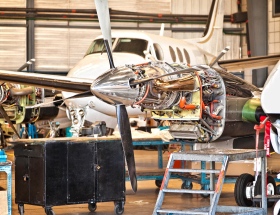When it comes to aircraft maintenance metrics, “What gets measured gets improved.” While this is a seemingly simple statement, the big questions to ask are: What should we measure?
Why measure it? And how should we do it?
To help your maintenance team start measuring the value it needs to create for your host organization, let’s sort out the what’s and why’s so you can get to the important piece—the how.
What Metrics to Measure?
How does aviation create value for your corporation, host organization or high net worth owner?
To understand this as maintenance leaders, you must:
- Interview your stakeholders—from the aviation department’s reporting executive to his or her boss (e.g., CEO) and/or the top travelers or customers.
- Document what they value about aviation (e.g., availability, service, safety, security, etc.).
- Determine how your maintenance department can help meet these expectations so you can set operational performance standards.
Why Measure?
By learning what to measure, you’ll begin to demonstrate the value your team brings to the host organization. And that’s where we get to the why.
It’s important to get this piece right because value creation:
- Helps increase profitability.
- Is the ultimate scorecard.
- Explains your department’s reason for being.
By articulating your maintenance department’s value in a monthly, quarterly or even annual metrics report, your will help measurably improve the organization’s operating results and financial return.
How to Measure Aircraft Maintenance Metrics
Measuring and reporting aircraft maintenance metrics is usually commonplace. Unfortunately, most of us only go so far as measuring “activities.”
Meaning, we generally track aircraft availability and reliability, planned vs. unscheduled maintenance, on-time departures, etc.
But what we should be doing is spending concentrated effort talking to our leadership teams, department directors and reporting executives about anticipatory things.
After all, most executives want a forecast so they can predict what’s going to happen.
Ok. So how do you get started? We recommend implementing a 4-step process called Level IV Metrics:
Level I. Pull all of the raw data pertinent to your maintenance department.
Level II. Measure important activities such as reliability and availability, by serial number and by month.
Level III. Predict what future performance will bring at predetermined intervals (e.g., month or quarter) with respect to significant maintenance procedures and their costs.
Level IV. Quantify and communicate the value that your maintenance function creates for the host corporation by measuring things such as:
Financial savings associated with in-house maintenance versus outsourced parts and labor.
Timely response to unscheduled maintenance requirements which saves any trip from cancellation.
The ability to provide long-range maintenance support in remote areas of the world.
How to Measure Your Department’s Value
While each maintenance organization is unique, these examples further demonstrate how to measure your own department’s value:
Aircraft Availability
For each tail number, measure the daily availability and downtime year over year. Note the scheduled and unscheduled maintenance events that caused each aircraft to be removed from service.
Next, examine your upcoming maintenance events to determine how they can be scheduled so they don’t impact the aircraft’s normal availability. Be creative in your scheduling and tracking the difference in availability year over year. And publish the results for all to see because as we mentioned what gets measured gets improved.
Dispatch Reliability
How often are heroic efforts needed to make a last minute or overseas trip? The answer should be zero!
Consider setting a goal that each aircraft should be dispatch-ready in a certain number of minutes or hours prior to departure without any further maintenance action required.
You will spot trends for each tail and be able to take corrective and preventative actions so that heroics become unnecessary.
Return to Service Time
Let’s face it—things break. That’s life. The timeliness and effectiveness of your response is what counts. So measure the time it takes your organization to restore the airworthy status of your aircraft.
This will tell you a lot about the effectiveness of your troubleshooting, the adequacy of your spares inventory and the responsiveness of your airframe manufacturer.
Armed with this information, you can make continuous improvements in your organization’s response to unscheduled maintenance challenges.
How to Design a Maintenance Metrics Package
There are several key points to keep in mind as you design a maintenance metrics package:
Organize the data
Make it manageable, understandable and, most importantly, meaningful.
Make it relative
The data you gather and report on must resonate with executives, so consider measuring with respect to your budget, operating results, industry benchmarks by your peer aviation organizations, etc.
Keep it simple
Any reporting of metrics must communicate with the reader quickly, succinctly and with sufficient clarity so that departmental achievement can be readily identified.
With all this in mind, remember that the impact of quantifying value can be quite substantial and can help transform the way your group understands the overall company goals and howto achieve them.
Reporting on maintenance results can be inspiring and energizing, helping the entire aviation team to strive for best-in-class performance.
Next step
If you’d like assistance with setting up your own aviation metrics and performance dashboards, we’re here to help. Still not sure? You may also enjoy this client case study.
